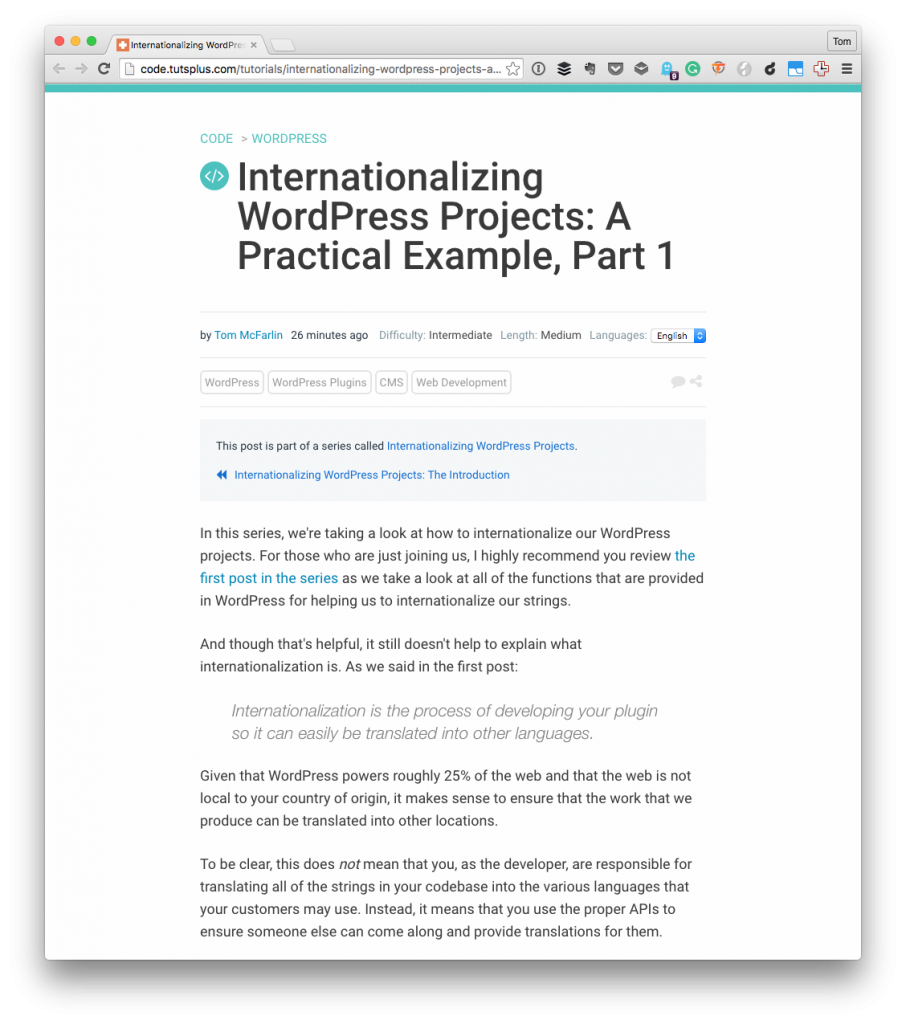Earlier this week, I shared a link to the introduction of a series of articles I’m writing on internationalizing WordPress plugins. The gist of the series is straightforward:
- I introduce the concept of internationalization,
- I demonstrate how to create a plugin that’s ready for translation,
- I then create the translations for a particular locale.
The second part of the series has is available via Envato. As is the case with other articles I’ve written, this post serves as a short description of the article to help determine if the tutorial covers more information you’d like to read.
And as mentioned above, this particular article covers how to write a localization-ready plugin.
Internationalizing WordPress Plugins
The remaining content provides a walkthrough for how to build a fully internationalized and translated plugin. To adequately cover the topic, I have separated the tutorial is available in two parts. The first article covers how to create and internationalize the plugin; the second covers how to localize the plugin.

The tutorial provides a refresher on what internationalization is:
Internationalization is the process of developing your plugin so it can easily be translated into other languages.
And then the article justs jumps into the content that contains the following:
- Verifying that the local development environment is setup and ready to go,
- Creating the plugin directory and the file responsible for starting the plugin,
- Introducing the menu item and the template for what will display in the administration area of WordPress,
- Internationalizing the strings in the plugin,
- A word about object-oriented programming versus procedural programming.
Ultimately, the goal of the tutorial is to provide a step-by-step explanation as to how to create the plugin, leverage the existing API functions and lay the foundation for the plugin (to be developed further in the next section).
By the end of the tutorial, understanding how to internationalize strings throughout a plugin should be relatively easy.
For any questions or additional comments, please leave them on the original article.

